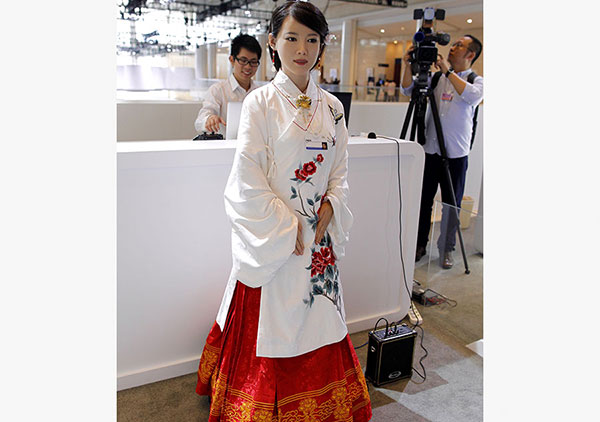
In a humming factory in Foshan, Guangdong province, a machine is busy tailoring fabrics to custom designs. Within 18 seconds, a pair of jeans is done, outperforming humans who would take 30 minutes to an hour to do the same job.
The "smart tailor", as the machine is known, is part of a broad effort by Foshan Shunde Everstar Clothing Co to leverage cutting-edge technologies and revolutionize its assembly lines.
Five years ago, when many Guangdong clothing factories suffered from falling overseas orders and rising labor costs, Fan Youbin, president of Shunde Everstar, decided to upgrade the company using the internet and automation.
After pouring 40 million yuan ($6 million) into inventing the smart tailor, the company also launched an online platform where consumers can design their own clothes and try them on in a virtual fitting room.
"Within three days of placing an order, our customers can receive their clothes," Fan said, adding that the shift to smart manufacturing makes it possible to produce a profit from small orders.
Shunde Everstar's story of increasing automation is playing out across China in thousands of factories, which purchase a quarter of the industrial robots sold globally.
The trend will be discussed in detail at the ongoing 2016 Summer Davos Forum in Tianjin, as Chinese firms scramble to embrace robots and big-data technology to boost efficiency and cut assembly line costs.
Data from the International Federation of Robotics show that between 2010 and 2014 the supply of industrial robots in China increased by about 40 percent per year on average.
"This rapid development is unique in the history of robotics," the IFR said in a recent report. "There has never been such a dynamic rise in such a short period of time in any other market."
Still, for every 10,000 employees, there are only 36 robots in China, compared with 478 in South Korea, 292 in Germany and 164 in the United States in 2014.
"The number will rise more sharply over the next five years, partly stimulated by strong policy support," said Hao Yucheng, deputy director of the China Robot Industry Alliance.
The robot industry is highlighted in the country's 13th Five-Year Plan (2016-20), which guides national economic development for the coming half-decade.
China also plans to triple its annual production of industrial robots to 100,000 in five years to help promote high-end manufacturing.
Midea Group, a leading maker of home appliances in China, is relying on robotic "workers" to churn out high-quality air conditioners.
In one of its factories in Guangzhou, Guangdong province, robots are performing a string of labor-intensive tasks, such as packaging and feeding parts, along with delicate and flexible work like applying bar codes.
By the end of 2015, Midea had installed more than 560 robots in air conditioner plants, up from only 50 in 2011. During the same period, the workforce was trimmed by more than 22,000.
"We plan to spend 4 billion yuan on cranking up automation in the next five years," said Wu Wenxin, Midea's vice-president. By 2018, the number of robots will surge to 1,500, and half of the company's manufacturing will be automated.


















































